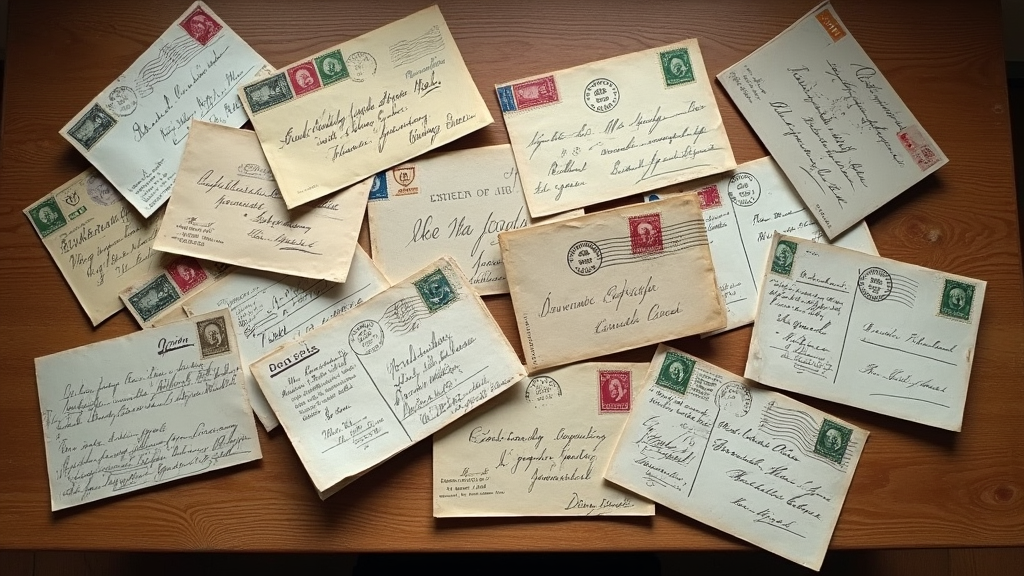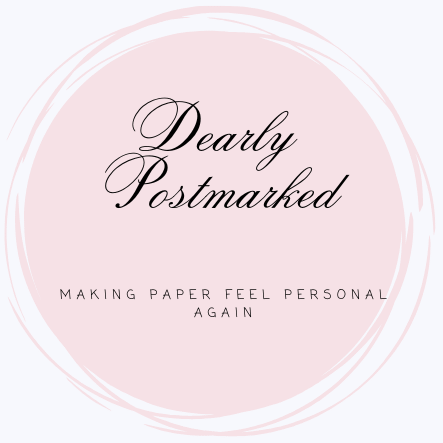Postcards capture moments that feel big and small all at once. They’re more than just quick messages sent from summer getaways or brief notes to say hello. These little time capsules carry a slice of someone’s life across the years, letting us glimpse personal stories tucked away on their backs. Each time I dig through a box of vintage postcards, I find myself wondering about the everyday lives and personalities that jump out from those handwritten lines. These stories give a peek into daily life, family bonds, and the unique moods of their senders, all captured in a handful of words.

Postcards: More Than Pretty Pictures
Most people notice the eye-catching artwork or colorful photos on the front of a postcard. But I’ve come to realize that the real magic is on the reverse side. The postcard’s limited space pushes the sender to make every word count. Whether it’s quick updates or heartfelt missing-you notes, reading old postcards is always an adventure. No matter how short, each message is an honest, unfiltered story.
The notes, dates, and addresses on postcards act as time stamps from the past. From the type of pen used to the quirks of the handwriting, you can spot tiny clues about the sender and the era. Family researchers often stumble upon a goldmine when flipping through a bundle of old cards. You might find inside jokes, snippets of daily routines, or offhand comments about world events from relatives who never expected their words would be so meaningful decades later.
The Historical Power of a Handwritten Message
It’s easy to forget that before texting or social media, postcards were a lifeline connecting people over long distances. Whether it was a family member in the military, a traveling worker, or someone away at school, postcards gave them a quick, real way to reach out. I’ve come across cards that simply say, “Safe and well. Missing you.” The words are brief but loaded with relief or longing.
Every handwriting scrawl tells more than just the words written. During the wars, notes home were glimpses of hope—sometimes even weaving in coded language to dodge censors. In ordinary times, postcards chart the big and upbeat moments: new babies, holidays, graduations, or memorable trips. A postcard proves the sender was there and sometimes hints at what they felt—even if just for a second. Collected over the years, these tokens become firsthand sources for social historians and family researchers, telling real life stories you just can’t get elsewhere.
How Postcards Reveal Culture, Personality, and Connection
The images on a postcard’s front paint one picture. Maybe it’s a city skyline from the 1940s or a hand-painted postcard of local wildlife. But flip it over and the back often brings the more personal story to life. A handwritten “Wish you were here,” or a silly drawing next to someone’s name, can turn a mass produced card into something singular and irreplaceable. These personal touches are the details that anyone seeking to understand the past on a personal level will appreciate.
- Language and Slang: Old postcards burst with the slang and abbreviations of their era, as well as inside jokes. These quick snapshots of how people spoke are valuable for researchers or anyone wanting to get a read on trending language of the time.
- Handwriting and Personality: You can get a read on someone just by the loops in their letters, doodles in the margins, or the choices they make in how to organize their short message. Personality often pops through more in the script than the sentences themselves.
- Family Relationships: Postcards often show off nicknames, gentle teasing, or comforting words among family. I’ve found cards signed only, “Dad” or “Aunt Millie,” as if the writer knew the recipient would know them instantly. These glimpses spell out close family ties in a subtle but powerful way.
- Cultural Snapshots: A card mailed from a faraway city or rural town gives us an instant tour of the sender’s world. There might be a quick mention of a world event, a local festival, or just the price of lunch that day—paired with the photo on the front, these tidbits build up a deeper picture of that specific moment in time.
Collecting and Preserving Meaningful Postcards
Collecting postcards is about much more than rare artwork or snazzy designs. The greatest treasures are often the deeply personal stories held in their words. Sometimes the most captivating cards I’ve found are those written by strangers: short weather comments, news of a recipe swap, or simply checking in. Those everyday slices of life are honest time capsules that show us what mattered to people in a given era.
If you’d like to start your own collection, begin by searching antique shops, flea markets, or even estate sales. I also recommend browsing online auctions and special forums; plenty of people are looking to pass along postcard lots. The key to keeping your collection safe is storage. Use acid free sleeves or archival boxes so the ink and paper last.
Tips for Saving Family Postcards
- Scan both sides and back up your digital files so the handwriting and images stay safe for future generations.
- Make short notes about the people or places mentioned. Even a few minutes of digging can fill in the history and add context to what’s written.
- If you know the order, arrange cards chronologically. It’ll help you follow family adventures and see how stories progress.
What You Can Learn from a Handful of Postcards
When you go through a stack of old family postcards, you might be surprised at the stories you find. The photos on the front might show off family trips, while the back could explain why the trip happened—a wedding, illness, or work. Put them in order, and you see way more than places or dates. You catch the feel of daily life, routines, worries, and inside jokes that just might never show up in official records.
Even postcards from unrelated senders teach you about changes in culture, prices, travel trends, and relationships. For both social historians and curious relatives, these details are truly valuable. They fill in the blanks, offering more vivid accounts than any census log. Every time a friend asks me about hunting down family roots, the first step I recommend is a hunt for old postcards. You might stumble upon nicknames, clues to lost relatives, or even small sketches on the backs—gems that bring the past into focus.
Pitfalls and Solutions in Preserving Postcards
Old postcards can be delicate: faded by the sun, torn at the corners, or marked up from years in dusty boxes. But a few simple steps can extend their longevity so that future generations get the same window into the past.
- Avoid direct sunlight: Exposure to the sun fades images and bleaches handwriting. Store your cards tucked away from harsh light.
- Handle gently: Clean, dry hands are best when sorting through old cards. Use gloves for especially fragile pieces.
- Label and organize: Keep a simple spreadsheet or list with the sender, recipient, date, and highlights from each card. This makes sharing stories with family quick and easy.
Digitizing: Saving Stories for the Digital Age
I always recommend digitizing your collection. Scanning both fronts and backs protects your treasures if the paper gets lost, wet, or crumpled. Digital copies are simple to share with relatives and history buffs alike. Plus, searchable files let you sort by place, date, or topic—making it easier to track down stories you want to share.
Frequently Asked Questions
Here are some of the questions I hear often from collectors and family historians:
Do postcards actually help with family research?
Definitely. They often hold clues about places, events, and relationships you won’t see on birth certificates or in distant memories.
How can I start a postcard collection?
Start by asking older family members about any old postcards lying around. Antique shops and online marketplaces are also great hunting grounds. Once you have a few, organize them to spot patterns and build stories.
What’s the right way to store old postcards?
Acid free albums or sleeves are best, and don’t forget to keep them out of the sun and away from damp spots. Scanning is also a good backup for preserving both writing and images.
Making the Most of Personal Postcard Collections
Personal postcard collections tell stories hidden from textbooks and old news. From learning your great grandfather’s quirks to picking up the details of daily life in another age, these cards create a real, lasting connection with the past. Put in a little work to store, scan, and share them, and that old pile of paper comes alive, ready to pass family stories and favorite memories on to the next generation.
You Might Also Like …
Why the Letters in My Footlocker Still Matter
